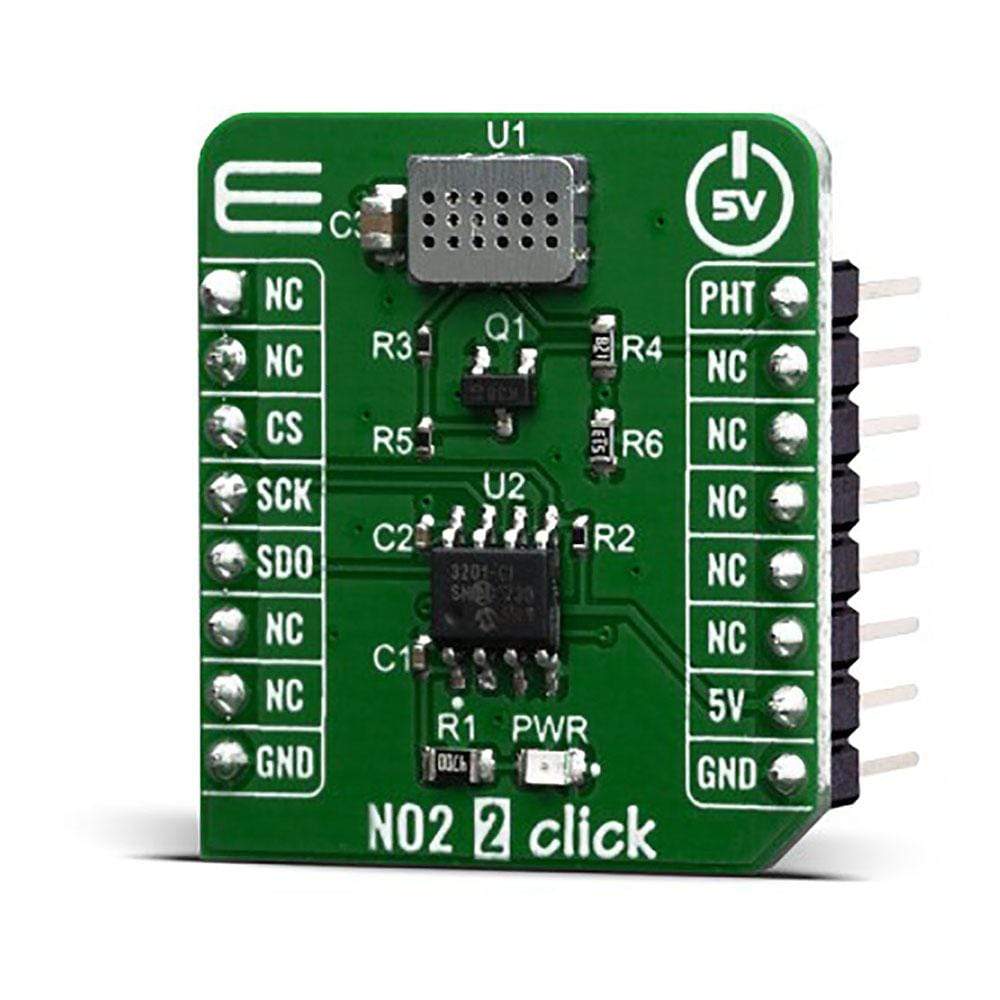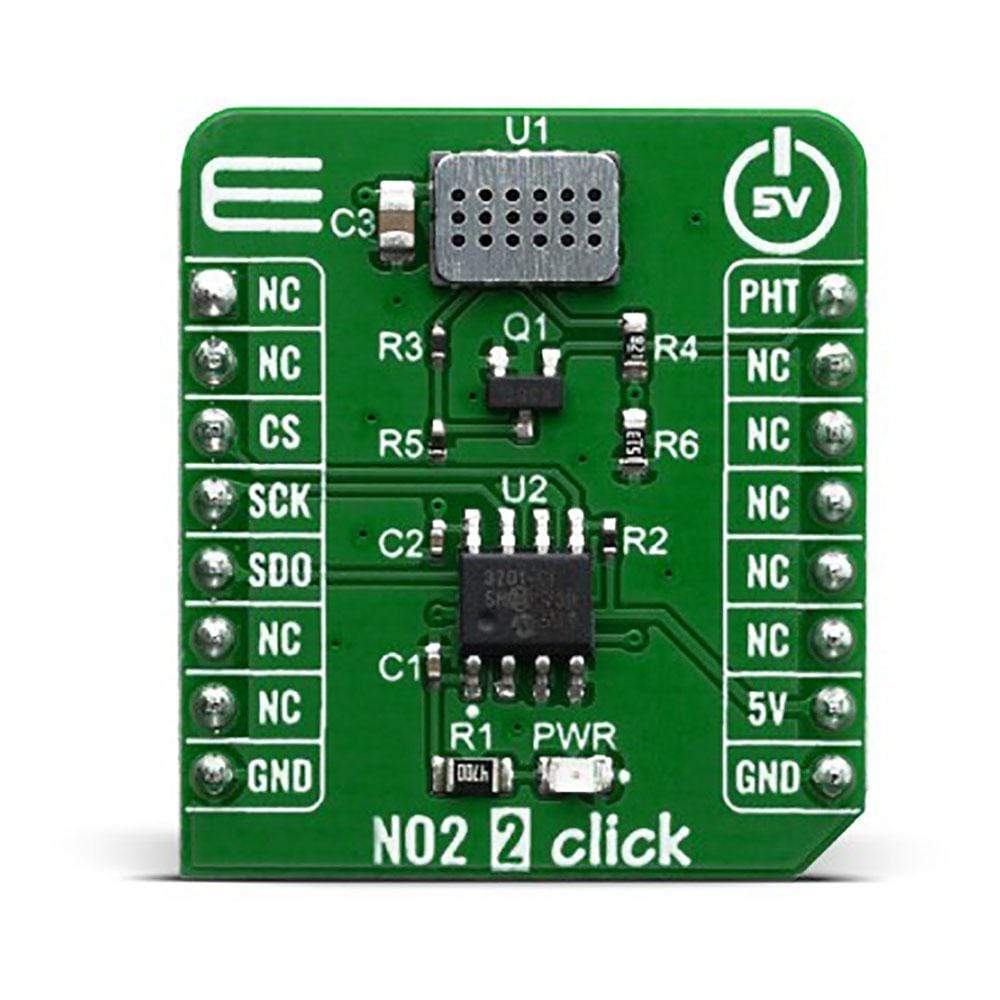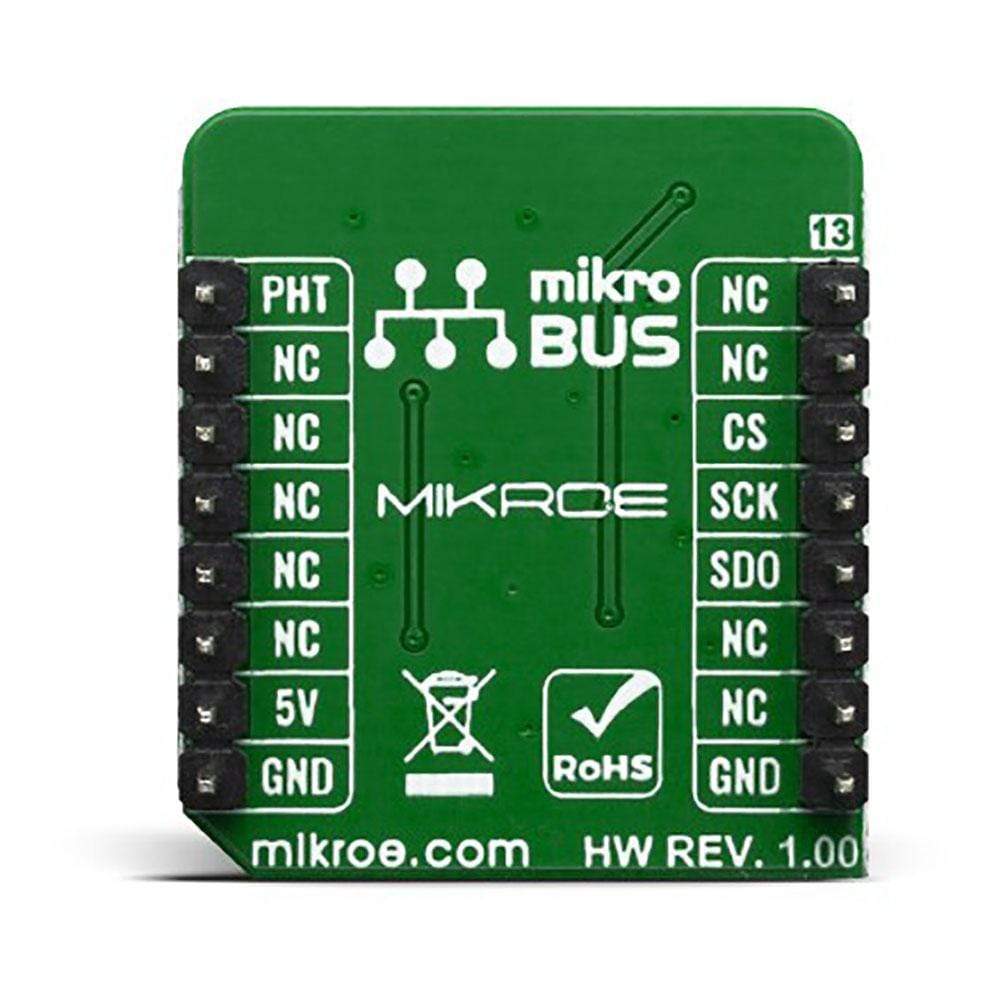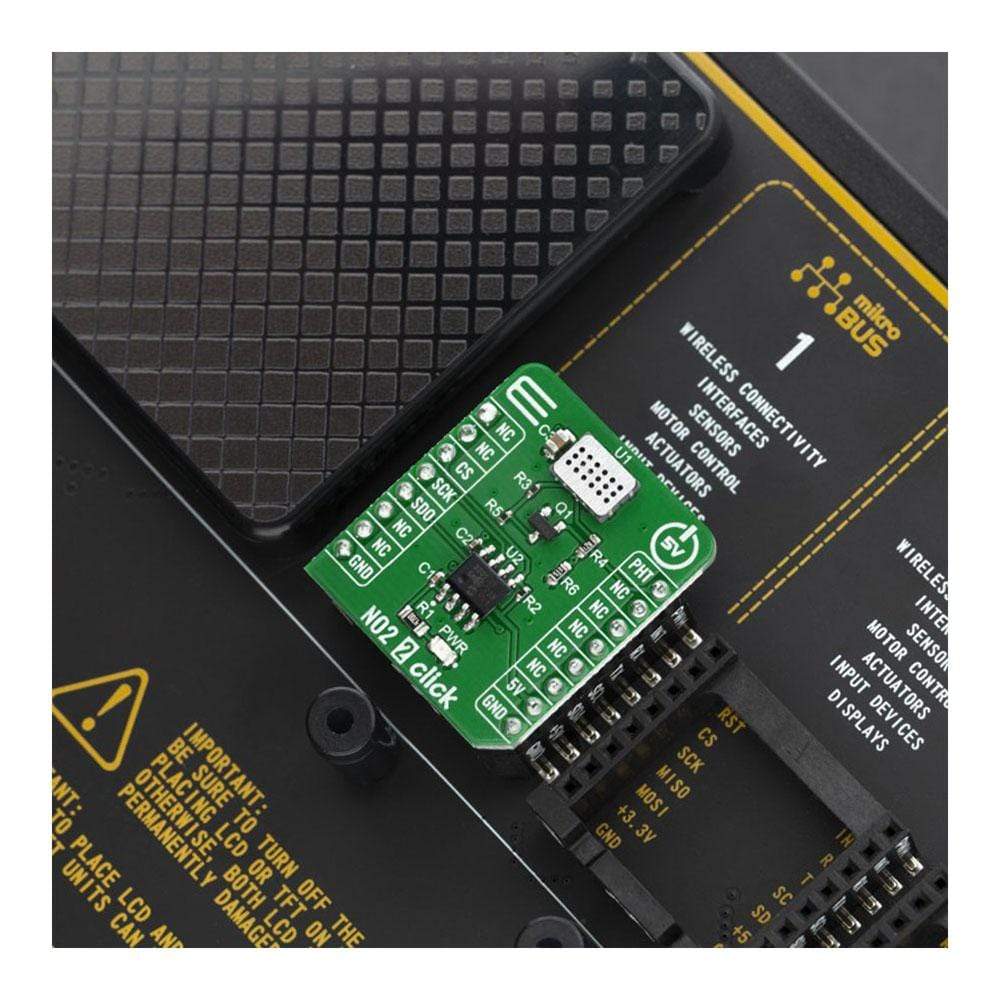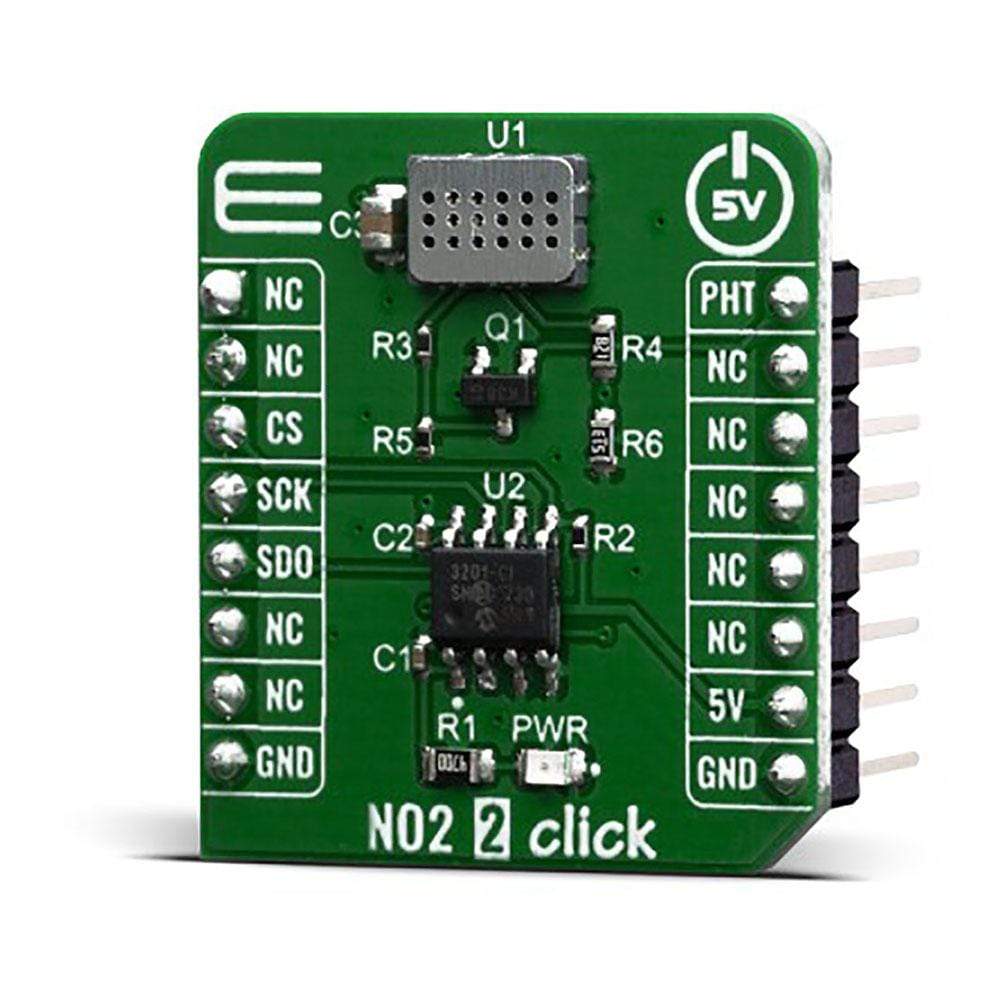
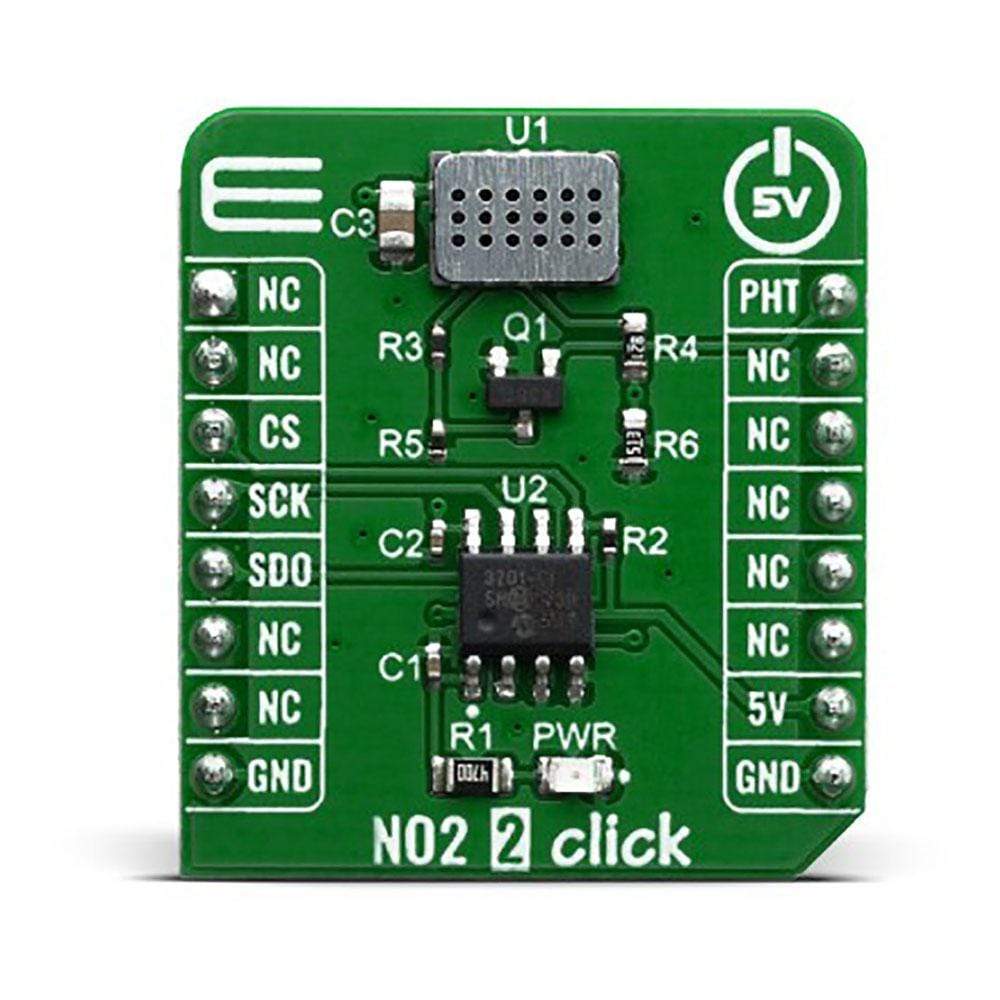
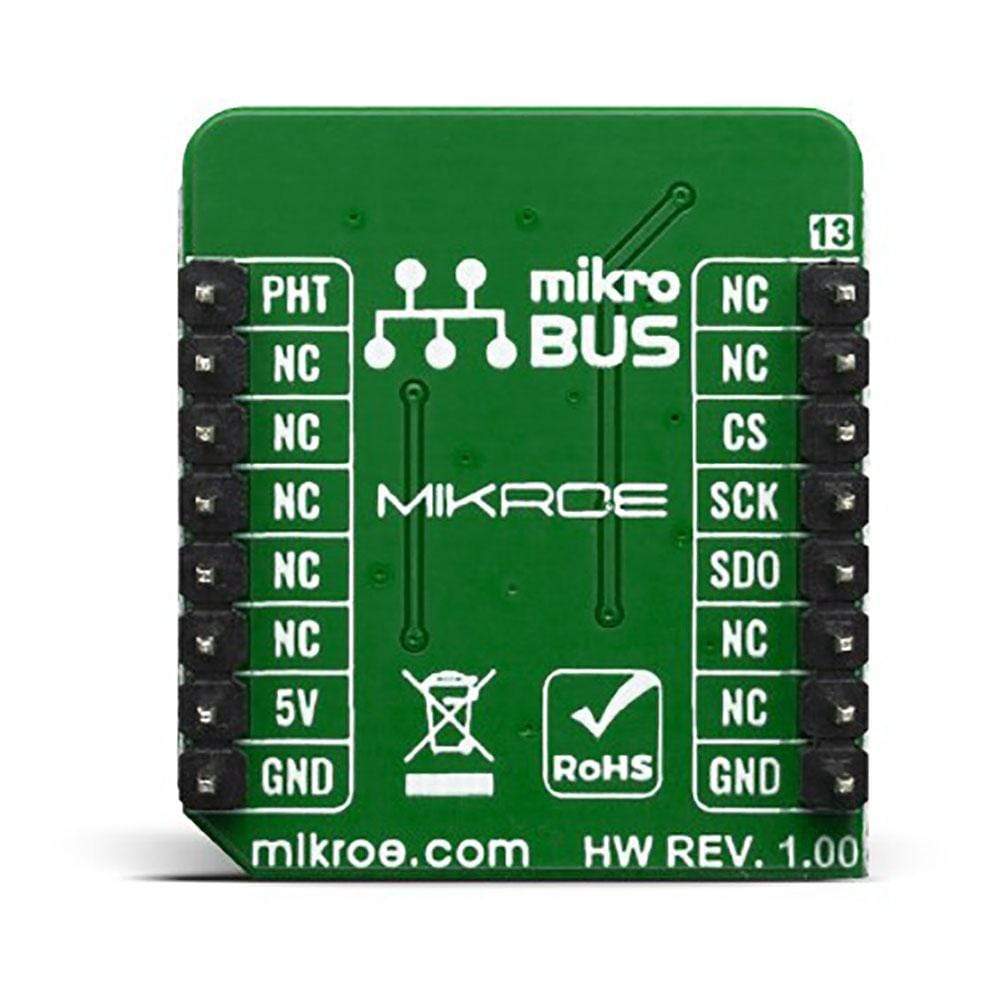
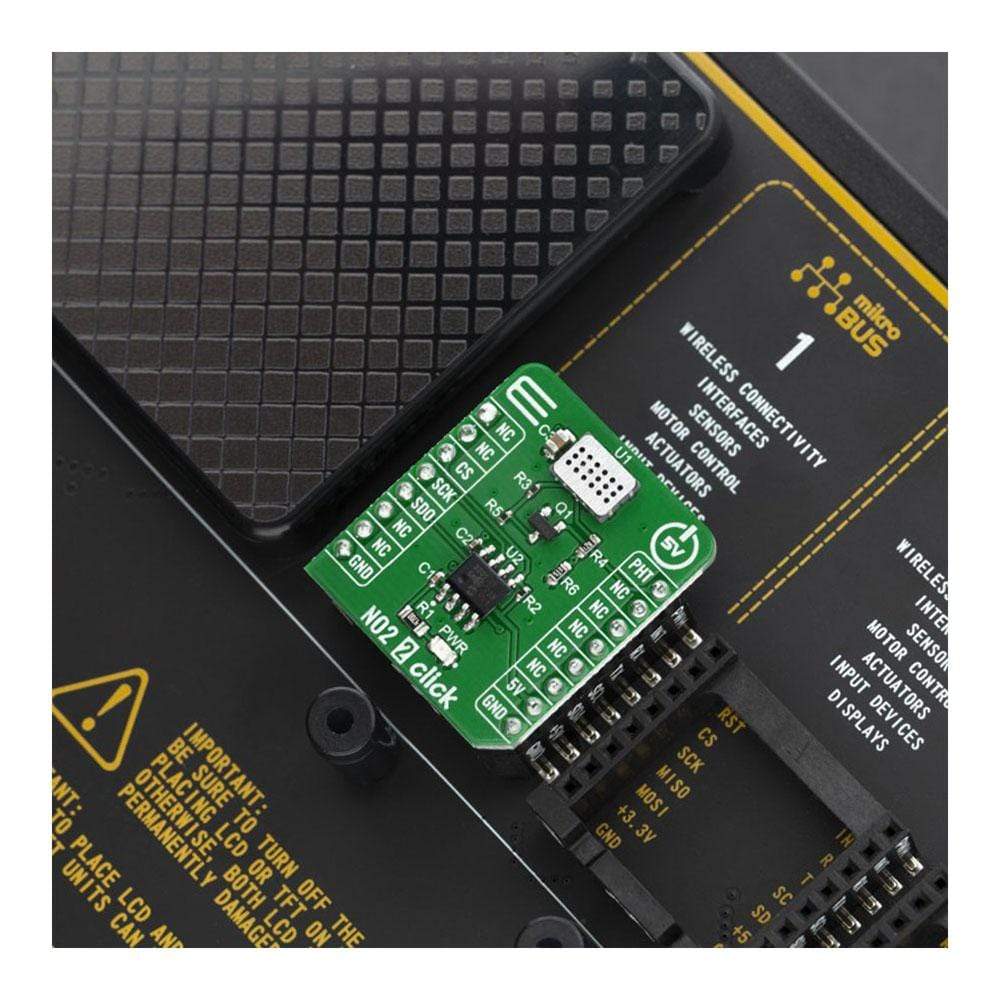
Overview
The NO2 2 Click Board™ is a gas sensor Click Board™, equipped with the MiCS-2714, a compact metal oxide (MOS) sensor. This sensor reacts to the presence of nitrogen dioxide (NO2) and hydrogen (H2). Its impedance changes as a result of a catalytic reaction, allowing it to be used in a voltage divider configuration. This voltage can be sampled by an accurate A/D converter (ADC), allowing data to be read directly over the I2C interface. The MiCS-2714 sensor itself is a robust sensor, which can be used in a harsh environment for gas leakage detection, in breath checking applications, early fire detection, etc.
The NO2 2 Click Board™ is supported by a mikroSDK compliant library, which includes functions that simplify software development. This Click Board™ comes as a fully tested product, ready to be used on a system equipped with the mikroBUS™ socket.
Downloads
Das NO2 2 Click Board™ ist ein Gassensor Click Board™, ausgestattet mit dem MiCS-2714, einem kompakten Metalloxidsensor (MOS). Dieser Sensor reagiert auf das Vorhandensein von Stickstoffdioxid (NO2) und Wasserstoff (H2). Seine Impedanz ändert sich infolge einer katalytischen Reaktion, sodass er in einer Spannungsteilerkonfiguration verwendet werden kann. Diese Spannung kann von einem genauen A/D-Wandler (ADC) abgetastet werden, sodass Daten direkt über die I2C-Schnittstelle gelesen werden können. Der MiCS-2714-Sensor selbst ist ein robuster Sensor, der in rauen Umgebungen zur Erkennung von Gaslecks, in Atemkontrollanwendungen, zur Früherkennung von Bränden usw. verwendet werden kann.
Das NO2 2 Click Board™ wird von einer mikroSDK-kompatiblen Bibliothek unterstützt, die Funktionen enthält, die die Softwareentwicklung vereinfachen. Dieses Click Board™ wird als vollständig getestetes Produkt geliefert und ist bereit für den Einsatz auf einem System, das mit der mikroBUS™-Buchse ausgestattet ist.
| General Information | |
|---|---|
Part Number (SKU) |
MIKROE-3700
|
Manufacturer |
|
| Physical and Mechanical | |
Weight |
0.02 kg
|
| Other | |
Country of Origin |
|
HS Code Customs Tariff code
|
|
EAN |
8606018719983
|
Warranty |
|
Frequently Asked Questions
Have a Question?
Be the first to ask a question about this.

